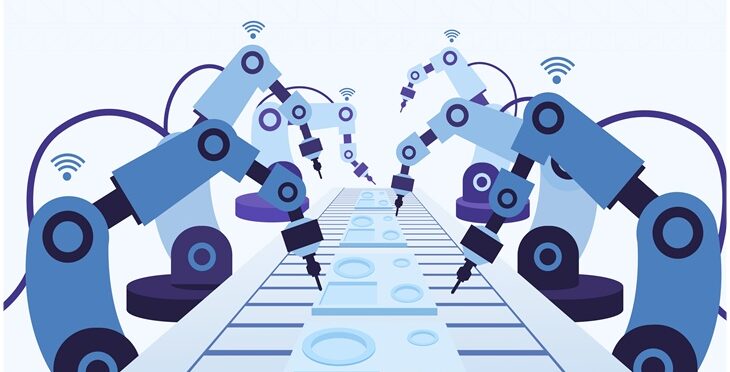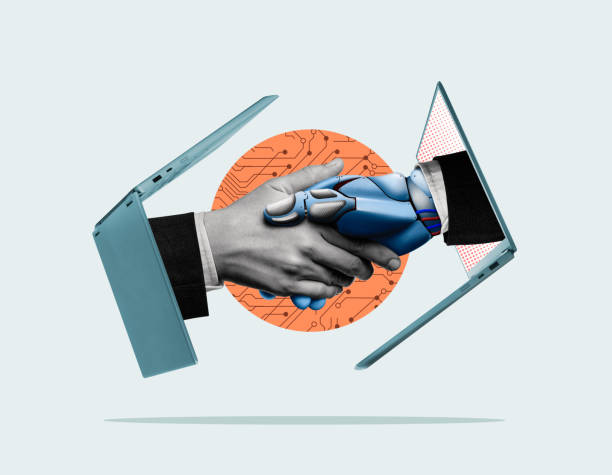What Is Hyper-automation?
The ultimate goal of hyper-automation in the service sector is to develop a process for enterprise automation. It is a framework and set of advanced technologies for scaling automation in an enterprise.
The term "hyper-automation" refers to an in-depth approach to automation. A hyper-automation practice entails determining which tasks to automate. It selects the automation tools, fostering agility through the reuse of automated processes. Also, it extends its capabilities using various flavors of AI and machine learning. A center of excellence coordinates all the Hyperautomation initiatives. The center of excellence aids in the acceleration of automation efforts.
Moreover, hyper-automation in the service sector reduces costs, increases productivity, and improves efficiencies. It also makes use of the data generated by digitized processes. Businesses can also use that data to make better, more timely business decisions.
Use-Cases Of Hyperautomation
Customer Service
Customer expectations are continuously rising. Businesses are looking for ways to shorten response times. They want to address customer concerns immediately. They aim to deliver effective solutions across all channels of communication. This is easily accomplished by incorporating Hyperautomation tools into the system. They can serve as an initial point of contact for customers. They can attend to and sort queries before diverting them to specific departments.
This can reduce manual effort in repetitive tasks. It can connect the customer to the appropriate customer care agent for a quick solution and engage the customer at live contact points.
Anti-Money Laundering
Everyone is concerned about the significant rise in fraudulent activities. Online payments have become more common and inevitable. Businesses can plan ahead of time to cut potential risks. They do so by implementing resilient Anti-money laundering measures. These measures use Hyperautomation solutions like AI and ML.
They can also be a combination of RPA bots that track for the signs of money laundering. This helps to eliminate the problem before it gets too big. This averts any potential consequences for their business and customers. Using RPA bots to collect and process customer interconnected data is possible. They pass records to verify an interaction++ and conduct post-payment follow-up confirmation actions. Thus they protect from looming danger.
Accounts Payable
It entails the large-scale execution of various accounts payable processes. This can be repetitive and time-consuming, resulting in delay or default. But, hyper-automation has facilitated process simplification. It standardizes invoice formats and consolidates available data into a single data system. Inputs are taken from ML and document extraction technologies.
These technologies are such as Optical character Recognition (OCR) as well as pre-existing RPAs. They get a boost to ease the process from receipt to payment without any external intervention.
It happens in the following way:
- RPA operates on received invoices, which are then formatted using OCR.
- RPA will coordinate data input, error correction, and the necessary action measure. This helps to process the invoice without the need for human intervention.
Recruitment
Hyperautomation can also be used in the recruitment sector, where it can speed up the process. Also, this is an easy, low-cost, and time-saving method for sourcing resumes. It can source from many profiles from various platforms as needed by the business. It has the potential to replace human effort. Also, it can sort through spam and spot potential candidates for the organization.
It also filters out undesirable applications based on pre-feedback parameters. As a result, it is clear that it can structure and simplify the recruitment process by a significant margin. This reduces recruiter stress by providing help with time-consuming tasks. It creates time and space for better analysis of the application and candidate.
Lead Generation
Most businesses are critical of their marketing measures to increase their outreach. They emphasize the importance of lead generation, which is a massive task. Visitors usually do not want to share their personal information. Hyper-automation helps businesses to capture IP addresses and other relevant details of incoming traffic. They can then track their actions on their website or app. This data is automatically stored and diverted into an outreach platform.
Here it is communicated to appropriate profiles within various departments for further action. The filtration of the targeted audience from incoming traffic becomes easier. Specific to businesses, services are improved for increased sales. Businesses can advertise to a defined set of target audiences. They can interact with these profiles with little effort. This process automates all touchpoints up to and including sales rep responses.
Advanced Analytics And Technology Integration
Businesses rely on hybrid-cloud or multi-cloud infrastructures. Hyper-automation helps in laying the groundwork to integrate various analytical tools. These tools make any process more robust. The hyperautomated setup can power a business's ability. It can also help to communicate and assist organizations in accessing and analyzing inaccessible data.
This helps to gain important organizational-level insights. Also, RPA technologies can convert unstructured data into structured data. This data can help in pattern recognition and insights extraction via unsupervised ML algorithms.
Storage Of Data
Hyperautomation assists the successful execution of data extraction, verification, sorting, organization, and storing. It does so in various formats and categories based on the organization's requirements and usage. This also makes data access more seamless and time-efficient. It also relieves the workforce of manual efforts where accuracy is one of the major aspects.
Once the original data gets processed, it forwards data to the various departments. Labor-intensive jobs are where Hyperautomation and RPA have a significant impact. It also reduces repetitive routines.
Benefits Of Hyper-automation in the Service Sector
Hyper-automation extends an organization's core automation capabilities. It does this through the use of RPA and other advanced technologies. The following advantages can add to businesses as a result of such integration.
Amplifies Automation And Automates Processes
Companies can use RPA to automate tedious and repetitive tasks. This makes their employees' jobs easier, but hyper-automation goes beyond that.
You can also use hyper-automation to increase the level of automation in your business. You can do this by combining a collection of technologies, tools, and components. This also makes your current jobs easier and also allows you to be more productive.
Improves Productivity And Team Collaboration
Companies can use hyper-automation to connect employees with their everyday tools. This will cause a novel transformation for businesses. As a result, this approach will encourage various departments to get involved in the process.
Users in the organization will find it easier to collaborate with the help of RPA, hyper-automation, and other tools.
Enhances Business Agility
Business agility refers to a company's ability to adapt to changing circumstances. An organization has to grow in response to rising demands and requirements.
Using intelligent automation tools can help businesses change. They can also keep up with dynamic and growing markets.
Increases Employee Satisfaction And Engagement
Hyperautomation has the potential to improve work quality. They can do so by utilizing advanced tech that makes manual labor easier to complete. Employee satisfaction can also rise as a result of improved automation.
The approach also necessitates that everyone in the organization contributes to the transformation. This also boosts workforce engagement.
Enhances Data Accessibility And Storage Mechanisms
Hyper-automation aims to improve efficiency by integrating modern software and processes. Businesses can expect more seamless interactions between users and their infrastructure. System integration is also an important aspect of digital transformation. This is due to the prevalence of hybrid and multi-cloud technologies.
Because all company systems can easily connect, all core elements become accessible through centralized storage. Moreover, the use of hyper-automation AI and ML optimizes these connections even further.
Increases ROI
The goal of any transformation or initiative is to improve the organization's goals. Companies can benefit greatly from hyper-automation with increased ROI.
Hyper-automation is capable of optimizing the invoice process. It does so by automating the end-to-end multi-layered approach. This ensures successful outcomes and returns.
Conclusion
Hyper-automation in the service sector is a mix-up of advanced technologies. This helps in automating many processes. It can be beneficial to organizations in a variety of industries. The popularity of hyper-automation is continuously growing. Businesses need to adopt hyper-automation to avoid falling behind.
For those who have already adopted the approach, the goal is to stay ahead. You can do so by assessing existing processes and ensuring that the current toolkit is still adequate.
As with any technology, you'll need to use modern tools in a smart and efficient manner. As a result, you should also choose hyper-automation software and tools that can function in tandem. Moreover, hyper-automation in the service sector provides a well-coordinated ecosystem. These automated processes also make it simple for the employees to function. It also helps them collaborate and work toward a common goal.
You may also like to read:
Cognitive Automation and Robotic Process Automation: Key Differences
Cognitive Robotic Process Automation: Advantages and Disadvantages





